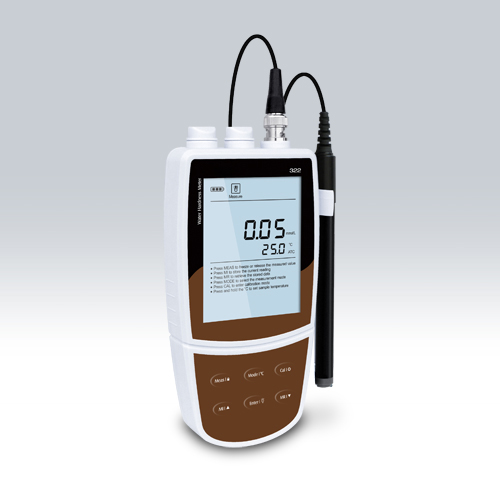A conductivity meter or conductivity meter is a device used to determine the electrical conductivity of the ions in a solution. This is achieved because this equipment applies an electric field between two electrodes and performs a measurement of the electrical resistance in the dissolution.
Electrical conductivity has been measured with conductivity meters for many years, and still today remains an important and widely used analytical parameter, because these devices offer a simple and economical way to provide a measure of the conductivity of the measured medium.
What is conductivity?
Conductivity is a measure of the property of aqueous solutions to conduct electric current, this property will depend on the presence of ions, their concentration, mobility and valence, as well as the temperature of measurement. It is considered a measure of the total ionic concentration that has a dissolution, that is, a quick and simple way to know the ionic force of a dissolution.
The most commonly used unit of measurement is S/cm, other alternative ways of expressing conductivity are salinity and total dissolved solids (STD). They are quite common and important devices in procedures involving water treatment and monitoring, as well as in environmental laboratories.
How does a conductivity meter work?
A conductivity meter measures the electrical conductivity of the ions in a solution, to achieve this it applies an electric field between two electrodes and measures the electrical resistance of the solution. Subsequently the device converts the reading into S/cm, where the value indicates the total amount of dissolved solids, is this amount of dissolved solids that can pass through the fiberglass. In other words, the conductivimeter operates with an alternating current to prevent a reaction from occurring in the substance to be analyzed or there being any effect on the conductivimeter plates.
There are conductivity meters that are equipped to supply the salinity value and convert the conductivity reading into a salinity reading. The total dissolved solids can be determined by multiplying the conductivity measured in microSeimens by a factor of 0.67.
How should a conductivity meter be used?
Typically, the solution to be measured should be poured into a plastic container not less than 10 cm high, then the probe should be placed inside the container, ensuring that it is immersed in the solution at least in about 5 cm. Wait about 5 seconds until the measurement is stabilized, if you want to make measurements with different solutions, they should be measured from the lowest conductivity to the highest conductivity.
To decide on the ideal conductivity meter for your laboratory, it is essential to determine the types of materials to be subjected to conductivity analysis. The desktop is the ideal computer for labs.
What do we offer you in Kalstein?
At Kalstein we are manufacturers of laboratory equipment of the highest category and that at the best prices of the market. In this opportunity we present you the Conductivity / TDS / Salinity / Resistivity Meter YR01828, this equipment offers excellent reliability, sensitivity, response and low cost that makes conductivity a valuable tool used to control quality. Our professional conductivity meter contains 4 measuring modes, the meter is suitable for measuring conductivity, TDS, salinity and resistivity, accuracy: 0.5% F.S.S. This new device has the following features:
- It is equipped with a 7-inch TFT display.
- Calibration from 1 to 3 points with automatic recognition by conductivity standards.
- Selectable cell constant, reference temperature, TDS factor, linear / nonlinear / pure water
- Compensations, percentage / seawater / Practical salinity measurement modes.
- Automatic temperature compensation corrects the conductivity measurement.
For more information we invite you to take a look, at HERE

